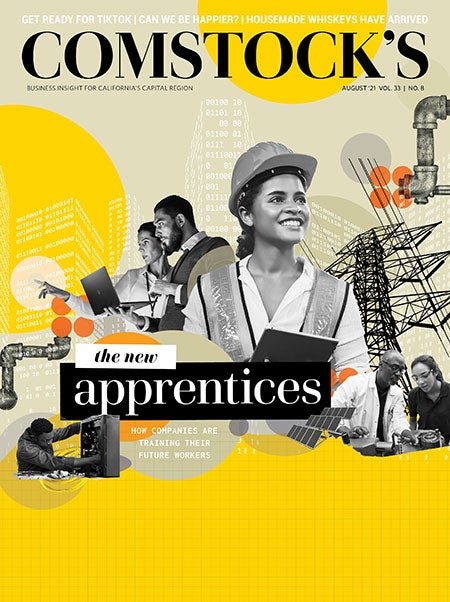A little more than a year ago, I moved the Comstock’s staff to a smaller office. It was part of a long-term plan to reduce costs. But I still wanted the staff to be happy in their new environment, so the space was freshly painted and computers and desks were comfortably arranged on top of new carpeting. Since then, very few people have stepped on the new carpet.
We have put out the last 15 issues of Comstock’s with almost all of the staff working from home. It shows that no matter how well we plan, the world we work in may have other ideas. These days we need to go deeper into the alphabet than Plan B.
In recent weeks, as the rainbow of colored COVID-19 restrictions and mask requirements were lifted, businesses have been trying to plan for a future that in some respects is changing in ways we can’t totally predict. Some think the pandemic caused the changes, and some think these changes would have occurred anyway. Regardless, the pandemic certainly accelerated trends that had been a growing undercurrent in the economy.
Employees’ expectations have changed too. Most who have adapted to working from home want to continue to do that, at least some of the time. People who work in the service and hospitality industries have been slow to come back to work, either concerned for their health while interacting with customers or holding out for higher wages and better benefits. A recent report from the National Federation of Independent Business revealed that 46 percent of small businesses are having a difficult time filling available jobs with qualified workers, despite raising compensation.
Microsoft’s annual workplace trends survey shows that workers are struggling and exhausted from the stress of the last 15 months. Digital overload, too many meetings and the constant disruption of being on call have taken their toll. Younger workers are feeling more isolated in the digital workplace. The report begins with a bold proclamation: “The future of work is here and it’s hybrid.” Just as 2020 changed the landscape of work forever, the report states, we’re now on the brink of another disruption: “flexible work is here to stay, and the talent landscape has fundamentally shifted.”
Certainly, a year of struggles to balance work, parenting and schooling, and the almost unimaginable death and illness that many have witnessed firsthand across the country added to the mental strain. Many people are looking for greener pastures. Forty-one percent of those surveyed by Microsoft are considering changing jobs or careers to find a better balance in their lives. Research shows a record number of employees in all segments of the economy have quit their jobs.
Charting a course through this turmoil is complicated and constantly changing. But you can create an environment that keeps your sales teams productive and key workers happy.
According to Microsoft, two-thirds of employers are redesigning their offices and work policies to create hybrid work environments that nearly 75 percent of employees surveyed are asking for. That goes beyond well-spaced office furniture and a mask policy. Designing office spaces where workers can collaborate gives less-experienced employees an opportunity to be included in solving problems or managing projects, making them feel that they belong on the team. Being flexible about working hours helps employees juggle competing demands, including parenting. Putting certain hours off limits for emails and digital meetings establishes a boundary that protects personal time.
After a year with so many personal hardships, addressing employees’ mental health is as important as their physical environment. Ryan Larkin, chief operating officer of Rancho Cordova-based MDstaffers, noted recently that with the advent of telemedicine and the destigmatizing of mental health, people are more open to talking about their mental health struggles. “It’s not enough for employees to be physically healthy,” he contends. “They need to be mentally healthy too.”
Our health and wellness story in this month’s issue, “The New Science of Happiness” by Jeff Wilser, gives insight into how both employers and employees can promote improved happiness in the workplace — and why this matters for employee engagement. Unsurprisingly, it starts with cultivating a positive culture.
We’ve learned in this last year that high-quality workers can be found everywhere and many (outside of the service and hospitality industry) can work from anywhere. And for those who choose to come into the office, don’t skimp on the paint and carpeting. It’s a good investment that will show employees that you value them and it will make them happier to be there. And with less daily wear and tear, it might last longer too. That’s something you can plan on.
Winnie Comstock-Carlson
President and Publisher
–
Stay up to date on business in the Capital Region: Subscribe to the Comstock’s newsletter today.
Recommended For You

Rediscovering the Meaning of ‘Onward’
Comstock’s president and publisher considers California’s forthcoming reopening.

Young Professionals Bring New Ideas for a Changing Economy
To open the annual Young Professionals issue, Comstock’s president and publisher considers Capital Region innovation.

The COVID-19 Fog Is Beginning to Lift for Business
Comstock’s president and publisher considers the effects of COVID-19 vaccinations on the business environment of the Capital Region.





